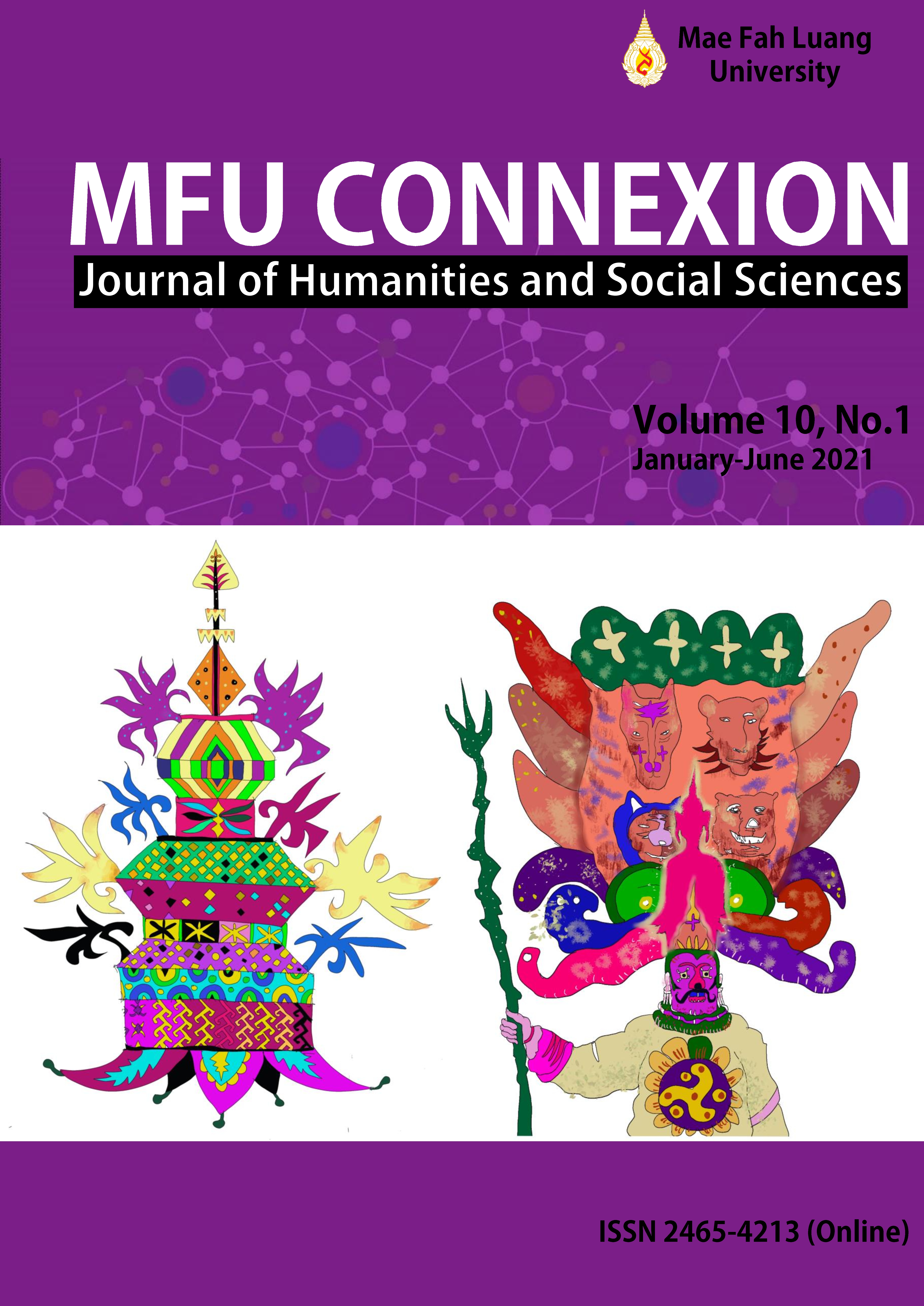Sani Embroidery Traders’ Gendered Cultural Capital and Symbolic Power
Main Article Content
Abstract
Drawing on Sani embroidery traders’ life experiences collected through in-depth fieldwork in Shilin, Yunnan Province, China, I found that inspired by the new economic opportunity of neoliberalism and cultural commoditization, an increasing number of Sani females are presently participating in embroidery trade in order to reach their goals and pursue better lives. This paper contends that Bourdieu’s concept of cultural capital is limited in that he did not take gender into account, and rarely considered women as capital-accumulating subjects. In investigating the Sani female embroidery traders’ trading practices, this paper argued that Sani embroidery traders are not only able to actively acquire and improve their gendered cultural capital but also able to convert it into symbolic capital to defend their legitimate position in the household and in society. This is further represented by the word “lacao”, which refers to an ideal woman, emphasizing her economic contributions to the family, hard-working virtue, and ability to take care of her household.
Article Details
Copyright
Connexion: Journal of Humanities and Social Sciences has an exclusive right to publish the accepted articles in any form. However, the author retains the following rights:
1. The right to the ownership of the article;
2. The right to use all or part of the article in his/her other works;
3. The right to re-produce the article for personal use or for use in the author’s organisation, in which case the author must obtain permission from Connexion: Journal of Humanities and Social Sciences;
4. The right to make copies of all or part of the work for educational use or for the author’s use in classroom teaching; and
5. The right to include the work (both the preprinted and printed versions) in an institutional repository.
References
Adkins, L. (2005) ‘Reflexivity: Freedom or habitus of gender?’, in L. Adkins & B. Skeggs (eds.), Feminism after Bourdieu, pp. 191-210, Boston: Blackwell.
Alexander, J. (1987) Trade, traders, and trading in Rural Java, Singapore: Oxford University Press.
Bourdieu, P. (1977) Outline of a theory of practice, Cambridge: Cambridge University Press.
Bourdieu, P. (1986) ‘The forms of capital’, in J. G. Richardson (ed.), Handbook of theory and research for the sociology of education, pp. 241-258, New York: Greenwood Press.
Bourdieu, P. (2001) Masculine domination, Stanford, CA: Stanford University Press.
Bourdieu, P., Nice, R., & Bennett, T. (1984) Distinction: A social critique of the judgement of taste, London: Routledge, Taylor & Francis Group.
Elson, D. (1992) ‘Male bias in structural adjustment’, in H. Afshar & C. Dennis (eds.), Women and adjustment policies in the third world, pp. 46-68, New York: St. Martin's Press.
Guo, S. S. (2019) Sani Yi female embroidery traders’ economic participation, International Journal of Business Anthropology, vol. 9, no. 2, pp. 96-110.
Haddad, L., Lynn, R. B., Richter, A., & Smith, L. (1995) The gender dimensions of economic adjustment policies: Potential interactions and evidence to date, World Development, vol. 33, no. 6, pp. 881-896.
Harrell, S. (2001) Perspectives on the Yi of southwest China, Berkeley: University of California Press.
Kusakabe, K. (2001) Women’s participation in the market: Women retail traders in Phnom Penh, Cambodia, Bangkok: Asian Institute of Technology.
Laberge, S. (1995) Toward on integration of gender into Bourdieu’s concept of cultural capital, Sociology of Sport Journal, vol. 12, no. 2, pp. 132-146.
Lessinger, J. (2001) ‘Inside, outside, and selling on the road: Women’s market trading in south India’, in L. J. Seligmann (ed.), Women traders in cross-cultural perspectives: Mediating identities, marketing wares, pp. 73-100, Stanford, CA: Stanford University Press.
Lovell, T. (2000) Thinking feminism with and against Bourdieu, Feminist Theory, vol. 1, no. 1, pp. 11-32.
McCall, L. (1992) Does gender fit? Bourdieu, feminism, and conceptions of social order, Theory and Society, vol. 21, no. 6, pp. 837-867.
Moi, T. (1994) Simone de Beauvoir: The making of an intellectual woman, Oxford: Blackwell.
Swartz, D. (1997) Culture and power: The sociology of Pierre Bourdieu, Chicago: The University of Chicago Press.
Swartz, D. (2013) Symbolic power, politics, and intellectuals: The political sociology of Pierre Bourdieu, Chicago: The University of Chicago Press.
Wu, G. (2001) ‘Nuosu women’s economic role in Ninglang, Yunnan, under the reforms’, in S. Harrell (ed.), Perspectives on the Yi of southwest China, pp. 256-266, Berkeley: University of California Press.


